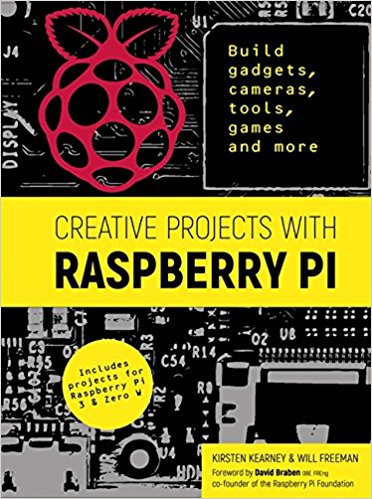
The aim of the Creative Projects with the Raspberry Pi book by Kirsten Kearney and Will Freeman is to inspire readers to build electronic projects with the Raspberry Pi 3 and Zero W. In total there are 35 different projects to build, across topics such as robots, games, home automation, scientific experiments and art.
Beginners can start with the basic building projects, such as a classic LED switching circuit and a Raspberry Pi power button. These only need a breadboard and a few simple components. And the project code is from the publisher's book's webpages.
However, there is no getting away from the fact that the core of this book revolves around relatively sophisticated, and in a number of cases extremely involved, electronic Pi-powered contraptions.
In other words, it's aimed at serious hardware hackers, rather those who simply wanting to tinker around with Raspberry Pi electronics.
While one or two projects can be done in a few hours, many will take much longer to construct. In fact, for a few the timespan is measured in weeks. So you’ll need plenty of patience, a solid soldering technique plus an assortment of DIY skills.
And you’ll need deep pockets too. When you take into account all the additional components, such as an LCD screen, various add-on boards and experimental kits like the CamJam EduKit 3, the majority of projects cost considerably more than a Raspberry Pi 3. The most advanced projects can cost thousands of pounds.
In summary, it’s a book stuffed full of innovative and well documented ideas. And you can of course take these ideas and develop you own custom variations. But if you're just taking the first steps of a journey into Raspberry Pi hardware hacking, or your time and funds are limited, it probably isn’t the right book for you.
Try my Free Raspberry Pi Python Coding Tutorials



